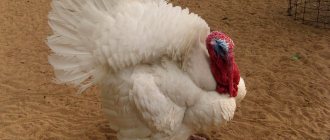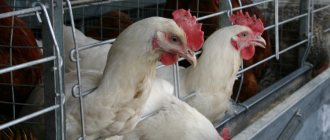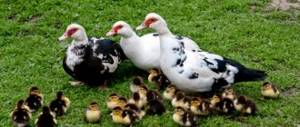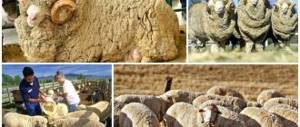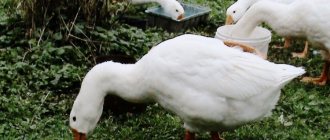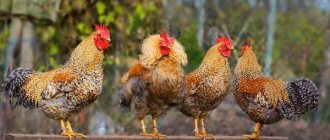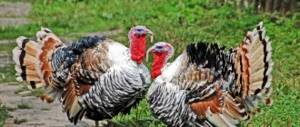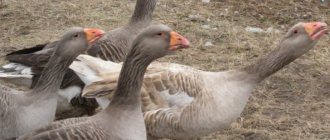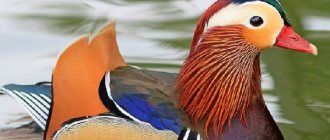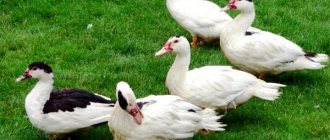Features of sheep breeding in Russia
Sheep farming is a fairly common activity in the world.
If we consider the development of sheep farming by country, the undoubted leader in the industry is China. As for the development of sheep farming in Russia, it can be practiced in any corner of our country, from the most extreme northern point to the south. Thus, sheep farming in Russia is widespread in all regions of the country. The only obstacle can be the fact that sheep do not tolerate dampness and high humidity well, because in such conditions sheep can get sick due to weakened immunity and a decrease in resistance to disease, which negatively affects sheep breeding.
Sheep have a hard time with dampness and high humidity.
As mentioned earlier, for the normal operation of a farm (SPK) with breeding sheep, no initial investment is required. As for the success of the business, the positive thing is that sheep’s wool is in demand in the Russian Federation, just like sheep’s cheese and meat products. Sheep mature quite quickly; as a result, already at 8 months the lamb can be used for meat - this will ensure a quick profit.
Here are the statistics on the development of sheep breeding by region of the Russian Federation in the table:
| Regions in which sheep farming is considered developed | Number of livestock at the beginning of 2021 |
| Stage of development of sheep breeding in Dagestan (the leader in the development of this branch of farming, the region where sheep breeding is most developed) | about 5,400 thousand sheep, which is approximately 21% of the total number |
| The state of sheep farming in Kalmykia | about 2500 thousand heads |
| The state of sheep breeding in the Stavropol Territory | Approximately 2300 thousand heads |
| Astrakhan region | 1600 thousand heads |
| Karachay-Cherkess Republic | About 1200 thousand heads |
How to make money by breeding sheep
Breeding sheep as a business is an entrepreneurial idea, within the framework of which the farmer needs to solve the following problems: form a highly productive population of sheep, provide the herd with normal living conditions, arrange supplies of high-quality and inexpensive feed, learn to sell his product with maximum profit. Judging by the reviews of experienced sheep breeders, all of the above activities can take a beginner from one to three years.
If during this period the entrepreneur works not so much for profit, but rather to build a reliable and highly profitable business, then by the third year of work he will have a very active year-round turnover of goods and money.
The most suitable form of business organization is a peasant (farm) enterprise. It is officially registered farmers who have the right to rent large pastures, receive subsidies from the state and enter into good deals with large suppliers and customers. But at the initial stage, not every farmer can afford to immediately register a farm. There is only one reason - the lack of necessary start-up capital. To launch a full-fledged farm you need:
- Buy the premises for a sheepfold or build it from scratch
- Buy agricultural machinery
- Conclude an agreement to purchase a herd of 300 sheep
According to the most conservative estimates, the starting budget for such an enterprise is at least 2 million rubles. It is useful to read how to get a grant for small business development.
Where to begin
Modern sheep farming is based on long-standing traditions in breeding this type of livestock. To keep sheep, it is necessary to have a pasture and a paddock in the warm season, as well as a barn or shed for the winter. Plus a heated room for ewes.
The next step is to think about the nutrition of the livestock. If in the summer the sheep are constantly on pasture, then in the winter they must be provided with dry food. Therefore, making hay is an important part of planning the diet of animals.
In addition to hay, oats and barley, as well as rock salt, are added to the feed. To feed the sheep in winter, feeders and drinking bowls are installed in the sheepfold. The sheep is a very clean animal and will never drink dirty water or eat leftover food.
Benefits of sheep farming
Sheep belong to a fast-growing animal species - after a few months a lamb reaches half the weight of an adult ram, and after a year this difference becomes barely noticeable. There are meat breeds that gain weight in a short time. Sheep are unpretentious, eat grass from the pasture, and almost never have to be fed . Of course, the southern regions of Russia are places where you can keep sheep, caring mainly only about preparing feed for the winter. Sheep are little susceptible to disease and are not difficult to care for. Products: milk, meat, wool. Production profitability is equal to 25%. You can purchase sheep from specialized farms where a certificate is issued.
Business plan
Anyone planning to raise sheep at home as a business needs to take into account the basic nuances.
These include:
- determining the quantity of meat products and ways of marketing them;
- calculation of the cost of building premises, renting pastures;
- cost accounting for water, electricity, feed;
- accounting for the cost of services of suppliers and workers;
- taking into account the risks of sheep farming as a business in a particular case;
- determination of financing options.
How to choose a sheep breed
Of course, the success of sheep farming will largely depend on the breed chosen. Thus, in Russia, Belarus and other countries of the former USSR, sheep of the Romanov, Edilbaevskaya, Texel, Gissar, Altai, Merin, Kuibyshevskaya and Tsigai breeds are most often purchased for breeding. Argali, Argali and Mouflon are classified more as wild sheep; breeding sheep breeding on them is rarely seen.
Choosing a sheep breed
The above breeds are in high demand, as they have excellent wool and produce excellent tasty and tender meat, which is always in demand.
Meat
They are distinguished by their large body weight and high rate of weight gain. Sheep adapt well even to harsh conditions, can graze all year round, and have strong immunity.
The main breeds include:
- Romanovskaya;
- Katumskaya;
- West Siberian;
- Kuibyshevskaya;
- Karachay;
- Frolovskaya;
- North Caucasian;
- Gorkovskaya;
- Volgograd;
- dorper;
- Suffolk;
- Tashlinskaya;
- boobay.
Meat-fat
Also known as fat tails. Popular breeds include:
- Gissar;
- Tajik;
- Kalmyk;
- edilbaevskaya.
Thanks to their fat tails, such sheep make it possible to obtain lard, which is highly valued in cooking.
Dairy
They are bred to produce cheeses. Breeding sheep, with proper care, can produce up to 700 liters of fat (7%) milk per year.
The sheep breeds are: Zvartbles; East Frisian. The breeds are practically not used for domestic sheep breeding.
Woolen
Sheep provide high-quality wool. The main breeds are:
- Grozny;
- Merinoland;
- Karakul;
- Tushinskaya;
- Lincoln;
- Caucasian
From one animal you can get from 2 to 23 kg of wool per year. Sheep are hardy and unpretentious, producing not only wool, but also high-quality, tasty meat.
Recommendations for beginners
For beginners, it’s better to choose universal options:
- Romanov sheep. Productive, prolific, undemanding in care, can be bred in regions with different climatic conditions. At 6 months, lambs reach 35 kg, adult rams weigh up to 100 kg, and ewes weigh about 50 kg.
- Gorkovsky. They have strong immunity and quickly gain muscle mass. An adult ram weighs up to 100 kg, a sheep - about 80 kg.
- Kuibyshevskys. They can be kept on pasture all year round, a ram reaches 100 kg, a sheep – 70 kg. The lamb reaches a weight of 30 kg at 4 months, and at 6 months it is ready for slaughter.
Payback and profit
From the purchase of a lamb to the running of an adult ram on the lawn, a whole year passes. During this time, haircuts are made to obtain wool, and, as a result, additional profit. From one animal you can get 5-7 kg of wool per haircut. The advantage of such income is that this process does not require additional investments and expenses.
The profit from the sale of sheep fully pays for all investments and expenses. The profitability of such a business is 45% in the presence of favorable conditions (well-planted area for walking herds). If we talk about keeping only sheep, the profitability is 30%, but with a stable monthly profit. The payback period will be 1.5-2 years.
Profit from rams can be obtained in two ways:
- Sale by live weight;
- Sale of prepared meat.
After the sale, in one way or another, you need to take away financing, in the end you will get a profit.
Lamb wool
The best sheep breeds for home breeding
The purchase of purebred sheep can only be justified in the case of mass breeding and production in factories. This activity is typical for people who plan to purposefully make money from breeding animals. For a household, it is best to choose one of the universal breeds.
Depending on the goal of the breeder, sheep should be selected according to one of the following criteria:
⦁ meat;
⦁ meat and lard;
⦁ meat and wool;
⦁ milk and smushki.
There are a huge number of breeds of each species. 39 of them are widely used for breeding. Each subspecies should be studied in detail.
Meat breeds
Sheep that are bred for meat have a higher slaughter weight than other breeds. As they grow older, they quickly gain weight. At 4 months, lambs reach a weight of 60 kg, and adult males can reach 150 kg and above, and females - 80 kg. Due to their heavy weight and large size, such sheep rarely become victims of attacks by predators; this is considered a huge plus for breeders. Their meat also has a low fat content, which is why it has a higher price on the market:
1. Gorky sheep. This species has a very dark color at birth, which gradually lightens. Their fur is very short. Gorky sheep have tasty meat, quickly gain weight, are easy to care for and are resistant to weather changes. When they are born, they do not require help from humans. The main disadvantage is the small number of purebred individuals in Russia.
Gorky sheep
2. Texel. This breed first appeared in the Roman Empire. Now its distinctive features are: high quality wool, tasty meat and ease of care. Representatives of the breed lack hair on the head and horns (in males only the rudiments of horns in the form of growths are observed). Sheep also have a powerful chest, short neck and tail.
Texel
3. Dorper. The color of the wool of such sheep is black and white, there are also no horns, and there is practically no wool. Representatives of the breed are extremely hardy and unpretentious to weather and difficult living conditions. Females are very fertile, they are able to bear 2-3 lambs twice a year. The cubs grow quickly, reaching sexual maturity by 6 months.
Dorper
Meat-fat breeds
This section includes sheep belonging to fat-tailed breeds. They have a massive fatty fat sac in the sacrum area. Sheep are adapted to life in cold climates, are massive in size, and are also highly adaptable. They have good immunity, are unpretentious to food and can be kept on pasture all year round.
Fat tail breeds
They use the fat tail bag as a storage unit for useful substances, which they can spend on especially harsh days of the year. Thanks to this, individuals are able to tolerate hunger and thirst for 2-3 days in a row. The main disadvantages include low birth rate (only 1 lamb) and poor quality wool, which is not in demand on the market. Representatives of fat tail breeds include:
Sheep feed
Purchasing quality feed at a good price is one of the main tasks of a farmer who raises sheep for meat. The lamb reaches market weight at about one year of age. Yes, some farmers sell lambs at both 4 and 6 months, but at this age the weight of the animal is still very small, and therefore such sales are considered not very profitable. It costs a farmer 12 thousand rubles to maintain one lamb for up to 10-12 months. The purchase price for slaughter of one sheep weighing about 80 kg is 17 thousand rubles. On average, 5 thousand rubles is a farmer’s profit from one ram.
To increase profitability, many farmers rent fields on which they grow fodder crops, or rent out harvesting equipment to other farms and take payment in grain. Today there are a number of proven mechanisms to reduce grain costs. Also, a sheepfold will not survive without cheap hay. The most inexpensive way to make hay for the winter is to own or rent a hayfield. From 1 hectare of hay land you can get 3-4 tons of hay, this is quite enough for a small flock. And if the average cost of a ton of hay on the market is about 5 thousand rubles, then the rent for hay land can be up to 500 rubles. per month.
How to organize feeding
For the proper organization of goat and sheep breeding in the household, it is important to properly organize the feeding of domestic animals. This will have a positive impact on the health of sheep breeding animals on the farm, on how quickly they will gain weight, and on the quality of the wool. Ideally, breeding sheep should spend the maximum amount of time grazing; fresh greens are ideal food for sheep.
Organization of sheep feeding
You can graze sheep for more than half of the calendar year, about 170 days a year. However, you need to switch to food from pasture carefully, introducing it gradually so as not to provoke digestive problems. Any green area can be used as pasture in the summer; almost any grass will do for sheep. However, in addition to grass food, it is important to enrich the feed with vitamins and minerals: this will have a positive effect on the health of the sheep. The dosage of such drugs should be calculated strictly according to the instructions, and also depending on the weight of the sheep or ram.
As for winter nutrition, the main product will be oats and hay, to which the sheep farmer must add premixes and forage. The basis is the consumption rate of about 2-3 kg of selected hay, about 1 kg of straw, as well as feed grain of at least 700 g per 1 individual. In addition, do not forget about vitamins and microelements in the complex.
Food in the winter season
In winter, sheep do not have the opportunity to eat meadow grass, so you need to feed them food and dilute the diet with fiber.
Fiber is found in vegetables and fruits. Also, it is worth feeding the animals with hay. But you shouldn’t overdo it with it, because with monotonous consumption of hay, it may begin to be poorly absorbed.
Don't forget about clean water. Precisely clean water, since dirty water can cause various digestive diseases.
What to feed the young?
The diet of cubs up to 2 weeks of age includes only mother's milk. If you have problems with breastfeeding, you can resort to cow's milk.
At 2-3 weeks of age, the diet should be supplemented with oat concentrate. This product needs to be fed before and after milk, at first the portion is only 50 grams, over time it needs to be increased so that by the age of one month it reaches 400 grams. At the same time, starting from 3 weeks, the lambs should be given selected hay in small quantities.
Starting from 2 months of age, babies’ diet should be supplemented with willow and birch shoots. This helps maintain vitamin balance in the body.
From 3 months of age, mother's milk is used as a supplement; the basis of the daily diet at this time consists of:
- hay – 100 grams per 1 kg of lamb weight;
- grain mixtures – 500 grams;
- herbs;
- beets and carrots.
In addition, young animals need to be fed 2 kg of steamed straw.
Upon reaching 6 months, the animal’s diet should include:
- hay – 1 kg;
- vegetable crops – 0.5 kg;
- concentrated feed – 0.2 kg.
You should also add 8 grams of table salt to your lambs’ food daily.
If the purpose of raising livestock is to obtain meat, from 4-5 weeks of age the animals should be transferred to an appropriate diet.
Diet of females
The diet of queens is practically no different from the diet of other sexually mature animals. Although the serving size needs to be increased. Enhanced nutrition should be provided to ewes already 6 weeks before mating and the animal should continue to be fed in this way until 10 weeks of pregnancy.
When the gestation period reaches 2.5 months, the sheep should be provided with grazing on pasture with the best green grass. To increase the energy value of food, you need to introduce concentrated food in an amount of 100-400 grams. The use of fertilizers is also required: chalk, phosphates, pine needles, special vitamin and mineral complexes.
In winter, pregnant queens need to be fed:
- hay – 1.5 kg;
- silage – 2-2.5 kg;
- root vegetables – 2 kg;
- grain and other concentrates – 250-300 grams.
Important! When the lamb is born, the portion of concentrated feed, silage and vegetables must be increased. This will help increase the female's milk production.
Purchase of feed
One of the most important cost items is the purchase of feed. For the most part, sheep feed on pasture plants while walking. But in addition, you need to include in their diet food filled with important vitamins and microelements. The composition of the feed will depend on the region in which the pasture is located. In a day, one sheep can eat:
- 2 kilograms of straw;
- 1.5 kilograms of hay;
- 100 grams of barley.
You can include branches, silage, and root vegetables in your diet. Be sure to add special salt-lizun to your daily diet.
Feed needs to be stored in larger volumes - 35% more than needed. Then it will be possible to reduce the amount of unexpected costs for purchasing feed.
What should a sheep house look like?
Sheep and rams do not need excessive space - significant savings can be made on space. At the same time, this does not mean that the sheep will be so densely packed that they will not be able to move normally. Excessively dense planting will contribute to the development of many diseases, including scabies, damage by various parasites and the rapid spread of other pathogens.
Sheep room
The sheep breeder must create conditions in the room so that it is not damp and humid. It is also important to monitor cleanliness: as it gets dirty, you need to clean the sheepfold and completely change the flooring. Depending on how scrupulously compliance with sanitary and hygienic rules is maintained, the quality of wool will change for the better. Also, when building a room, you need to take into account that the walls of sheep farms or farms need to be periodically washed, disinfected and whitewashed, using limestone.
Pros and cons of sheep farming business
If we consider the idea of sheep breeding as a business in detail, then its main advantages can be called several parameters:
- Sheep are quite unpretentious to their living conditions, because their warm “coat” allows them to withstand even very severe winter frosts. And this means that there will be no need to invest in the construction of special premises. To begin with, it will be enough to take care of constructing a canopy where animals can hide from rain, snow and wind;
- Sheep have good immunity, which significantly reduces the risk of various diseases in animals, which can lead, among other things, to the death of the herd;
- Sheep are capable of reproducing very quickly (one female can produce from 1 to 5 lambs per year). That is, by purchasing only 2-3 females to begin with, in a year, the number of rams can be increased to 15 individuals and more than recoup the funds invested in starting a business;
- Lambs gain weight very quickly and this makes the business profitable and promising. And having a plot of land that can be used as pasture will help save money on food;
- Sheep meat is in great demand. Moreover, despite the fact that the cost of lamb is much higher than other types of meat, it is constantly in short supply on store shelves. And this suggests that there is no high competition in this business niche and, if you take on the implementation of the idea of breeding meat sheep, you can make good progress on this;
- In addition to meat, sheep can produce wool and very healthy milk. Sheep skins, which can be used for dressing, can also be a good product. And this is another opportunity to make a profit.
Walking area
The walking area is an important part of the barn. Here animals can simply breathe fresh air and build muscle tissue.
For these purposes, a large area should be fenced off on the southern side of the sheepfold. Its dimensions must be calculated based on the following standards:
- one brightness requires 1 m2;
- an adult ram needs 10 m2.
If the size of the farm allows, the space for walking should be equal in area to two areas of the barn. Moreover, the surface of the site must be hard. This will help prevent possible injuries and also make the process of cleaning up feces easier.
How to properly shear a sheep
In order to sell sheep's wool at the highest possible price, you need to learn how to trim it correctly. In general, there is a certain technology that is not at all difficult to learn.
How often should a sheep be sheared? Depending on the breed, a haircut should be done 1 or 2 times a year. As for young lambs, whose wool is not so coarse, they need to be trimmed strictly once a year in the fall, the breed does not play a role here.
You need to think about cutting when the animal has built up a sufficient amount of fat in the hair, then the cutting process is easier, and the hair is soft and pleasant to the touch. Also, for the convenience of trimming, it is recommended not to allow grazing in contaminated areas on the eve of the procedure, so that debris does not remain on the coat. Before cutting directly, you need to remove any foreign objects from the hair, for example, burdocks or other plant debris.
Shearing
For haircuts, special clippers are used or the procedure is performed using scissors; of course, the first method is considered the most convenient and fastest. In addition to the fact that the machine saves your time, as a result of such a haircut you can get a fleece with the longest possible hair.
The pet is unlikely to be delighted with what is happening, so the sheep needs to be immobilized. It is recommended to place it on a surface, then tightly bandage the 3 limbs. It is recommended to start cutting from the head, then go down to the neck, stomach and groin area. Only after this you need to move on to trimming the sides and back, where there is the most hair. The machine should be held as close to the skin as possible, but at the same time move in such a way as not to cause pain to the animal.
Advice for novice sheep farmers states that wool obtained from the belly and legs is considered to be of lower quality, so it should be stored separately from high-quality fleece.
After the procedure is completed, the wool must be dried and then thoroughly beaten to remove dust and other foreign elements. For ease of storage and transportation, the wool should be rolled into a roller, having previously collected the uneven edges.
Sheep milk
In addition to meat and wool, breeding sheep produce milk, the beneficial properties of which have been known to mankind since ancient times. Among other things, it has a pleasant sweetish taste. If we compare its composition with the most common cow's milk, then sheep's milk is several times superior to it in all respects.
It is impossible to store sheep's milk for a long time: it begins to sour already on the 4th day after milking.
Sheep's milk is especially important for allergy sufferers - many refuse cow's milk in favor of sheep's milk. Sheep milk, judging by the reviews, is more tasty and delicate in taste, and the products made from it are the same.
All of these positive properties make the product indispensable in the dairy market; as a result, the sheep farmer has the opportunity to make good money selling it.
Sheep breeding methods and their characteristics
When keeping sheep, it is also necessary to adhere to certain requirements regarding their reproduction. This is the only way to increase the size of the herd and at the same time increase the profit received from the farm.
To reproduce this type of livestock, two main methods are used. With each of them, you should adhere to certain points:
- Natural fertilization. This method is usually used on small home farms. The technique involves purchasing one male at the same time as the females. The ram must be kept in a separate pen until mating, then it is allowed near the ewes, and taken away only after the ewes have finished mating.
- Artificial fertilization. This method is used in large-scale farming. It is indispensable if you need to fertilize many lambs, but there is only one ram. In addition, thanks to this method, it is possible to use the semen of famous breeding males, as this helps to facilitate its transportation to the sheep farm.
Some breeders resort to intrabreeding and interbreeding. The first method allows you to obtain purebred animals. The second method makes it possible to obtain individuals that have equal parts of the characteristic qualities of each breed used.
How to prepare animals for mating?
Preparation for mating begins approximately 8-10 weeks before the manipulation. During this period, the cubs are taken from the ewes (provided they are over 3 months old). The sheep are then assessed to determine if there are health problems and if they are suitable for breeding.
Individuals with the following pathologies are subject to culling:
- mastitis;
- pneumonia and other diseases of the respiratory system;
- serious liver diseases;
- parasitic diseases;
- severely worn teeth and other serious pathologies.
You should also pay attention to the age of the sheep. They become sexually mature at 6-7 months of age. However, their body continues to grow. So many breeders prefer to mate for the first time already at 1.5 years of age.
Choosing a breed for breeding
The choice of sheep breed depends on:
- geographical location of the farm,
- farm specialization (priority production of meat, wool, milk or breeding stock),
- productivity,
- precocity,
- consumer preferences for wool or meat,
- requirements for conditions of detention.
The classification of the main sheep breeds is presented in the table:
| Type | Breed |
| Fine-fleece |
|
| Longhair |
|
| Rough-haired |
|
One or two breeds of sheep should be bred. In the southern regions, meat breeds of sheep are more suitable for cultivation, and in the northern regions, animals with long wool are more suitable. Romanov sheep are very popular in Russia, and they are the ones that are recommended for beginning farmers.
Characteristics of the main meat sheep breeds:
| Breed | Description |
| Romanovskaya |
|
| Suffolk |
|
| Zwartbles |
|
| Texel |
|
| Gissarskaya |
|
| Gorkovskaya |
|
| Edilbaevskaya |
|
Breeding animals should be purchased from certified breeders with a good reputation.
Photo gallery
Gissar breed
Gorky breed
Georgian breed
Kazakh breed
Kuchugorovskaya breed
Kuibyshev breed
Lithuanian breed
Romanov breed
Suffolk breed
Fat-tailed breed
How to properly slaughter a sheep
In addition to wool and milk, sheep produce excellent meat after slaughter. In this procedure, it is important to comply with all sanitary and veterinary requirements, main technologies and rules; this is the only way to obtain a truly high-quality product.
Experienced sheep breeders do not recommend feeding sheep on the eve of slaughter. This is explained by the fact that when cutting a carcass, the contents of the intestines will significantly complicate the disassembly of the meat; many videos and photos have been shot about this. In addition, such a carcass is difficult to bleed, and undigested food can contaminate the meat. There are no restrictions regarding water.
Direct slaughter of a sheep is carried out when the animal is hung by the legs or placed on a bench. With a sharp movement of the hand, a knife is pierced into the neck of the individual near the auricle, then the main blood arteries located nearby are cut. The carcass must lie or hang in this state for at least 5-7 minutes, this is necessary for the blood to flow out.
How to slaughter a sheep
After this, you need to start cutting off the head, ligating the esophagus and further separating the skin. This is done correctly, starting from the abdomen, this is where the first incision is made. After this, cuts are made on the limbs, which is where the process of separating the skin from the meat begins. To do this, you need to use special knives that minimize the risk of ruining the skin. After removing all the skin, you need to leave it alone for a while.
After 2 hours, you can begin to preserve the skins, but you need to decide in advance exactly how this will be done. Currently, the most common type of preservation is considered to be a mixed type, or, as it is also called, wet-salted.
It is important to show the sheep to a veterinarian before slaughter: this will help make sure that the animal is completely healthy and there will be no problems with selling its meat.
Educational program on animal husbandry
You need to thoroughly study the subject you plan to study. Subsistence farming will require not only substantial financial investments, but also a significant contribution of physical strength. Sheep breeding should begin with an understanding of the characteristics of these animals, studying the most unpretentious breeds and how exactly it will be possible to receive a stable income in the long term. Much depends on the region of residence, the existing demand for products and the material and technical base that is available at the moment.
An important step is choosing a breed. From all the variety, it is worth choosing either meat species or hybrids that can additionally supply milk and high-quality wool. Promising and proven varieties:
- Romanovskie - optimal in the Central region and northern latitudes of Russia and Belarus, valued for their thick wool and fertility;
- Karachevskaya - take root in any climatic conditions, have strong immunity, are ideal for beginning farmers, profit in business will bring not only tasty meat, but also, as an addition, high-quality wool;
- edilbaevskie - for southern latitudes, aimed at producing young animals (fertility about 120%);
- Gissar breeds are one of the largest breeds, the weight of an adult individual reaches 190 kg, while they belong to the fat-tailed breed, bringing up to 20 kg of fat from the carcass;
- texel - very hardy, suitable for slaughter due to high meat productivity, the products do not have a specific odor.
What diseases are typical for sheep?
Like all living organisms, sheep are susceptible to disease, so the owner must carefully monitor the slightest changes in the health of the cattle. You can understand that something is wrong with a sheep or ram by the following signs:
- passivity;
- lack of appetite;
- poor appearance;
- dry mucous membranes;
- gait disturbance, etc.
The owner must monitor the health of the sheep
Among the most common factors causing painful conditions are the following:
- errors in nutrition;
- viruses or infections;
- improper conditions of detention.
An unhealthy sheep likes to eat its own wool. This indicates that the animal lacks certain substances and microelements in its diet. If large amounts of wool enter a sheep's stomach, it can lead to blockage of the esophagus by bezoars.
Small lambs often suffer from a disease such as dyspepsia. It usually occurs in young animals due to the fact that the female bearing the offspring did not eat properly. The development of this disease can be suspected by prolonged diarrhea and general impairment of consciousness. As a treatment, preventive fasting is used for 8-10 hours, then the animal is given saline solution in a volume of 200 ml every 3-5 hours.
Control of parasites
Many of the helminths of sheep are dangerous to humans, so it is necessary to carry out timely treatment of animals.
Diseases caused by worms include:
- fascioliasis;
- dicroceliosis;
- echinococcosis;
- hemonchosis;
- moniesiosis;
- coenurosis
For treatment, a drug prescribed by a veterinarian is used; for preventive purposes, deworming is carried out, and the hygiene of the stall and feeding of the animals is monitored.
Organizing a farm: advice from professionals
Before starting work, a detailed business plan is drawn up, including a feasibility study of the project. This information may be useful when obtaining a loan or selecting a partner.
For break-even production, it is important to correctly calculate the size of the future herd. It is better to start a family enterprise with 1000 animals; by autumn it naturally increases by 700 - 800 animals. Raising animals for meat does not require long-term cultivation; products from young animals are in great demand on the market.
If it is not possible to provide the necessary livestock, you can purchase 200 heads.
Experts believe that this is the minimum amount to ensure the operation of the farm throughout the year. It is worth considering that some animals may die (this percentage is especially high among young animals).
Proper selection of personnel is very important. It is advisable to have at least one specialist with a veterinary education on staff. Methods for raising sheep can be different, but you can’t do without a good shepherd (or better yet two) with free grazing. The well-being of the herd depends on these people, so there is no need to save. An experienced shepherd must understand how to properly maintain sheep; he is responsible for all livestock. Sometimes this role is played by one of the farmer's family members.
The main care of the sheep will be taken over by unskilled workers who come under the supervision of a shepherd. They can be hired in the nearest locality; wages depend on the region and can be calculated by the hour.
Photos of sheep breeding
Sources
- https://FermoVed.ru/ovtsyi/ovcevodstvo.html
- https://selskoehozjajstvo.ru/ovcevodstvo/
- https://zverovod.info/ovtsy/pravilnoe-razvedenie.html
- https://selo-exp.com/ovcy/razvedenie-ovec-opisanie-luchshix-porod-sozdanie-uslovij-dlya-soderzhaniya.html
- https://dachadesign.ru/ovcevodstvo/
- https://oselhoze.ru/zhivotnovodstvo/ovtsy/soderzhanie-ovets
- https://FermoVed.ru/ovtsyi/razvedenie-ovec.html
- https://fermilon.ru/hozyajstvo/zhivotnovodstvo/soderzhanie-ovets-v-domashnih-usloviyah-dlya-nachinayushhih.html
- https://okorovah.ru/ovtsy/razvedenie-myasnyh-ovets.html
- https://dachadesign.ru/razvedenie-ovec/
Business form
To make money selling sheep cheese and wool, additional investments, specialists and equipment are required. Therefore, at the initial stage of creating a farm, profit is usually expected to be received from the sale of lamb and raised young animals. It is believed that the minimum number of herds required for a profitable farm is 200–300 heads. This option, which involves quickly making a profit, is usually chosen by entrepreneurs who are short on funds. The optimal option to start a business is considered to be a livestock of 1000 rams.
Sheep farming, despite its apparent simplicity, requires considerable experience and knowledge for successful farming. If you don’t have them yet, then you will need to contact specialists quite often, and this costs money. It should be taken into account that their consultations will be needed not only on questions regarding the maintenance of rams, but also to solve problems related to reproduction, rearing and veterinary care.
Important. Sheep must be purchased from different places to avoid inbreeding. This will allow you to subsequently get healthy offspring.
The question of in what form to register a farm, as a peasant farm (peasant farm) or as an individual entrepreneur (IP), is determined mainly based on its size. For a farm with a small number of sheep, it is usually more convenient to operate as a peasant farm. At the same time, it can count on government subsidies and benefits, the volume of which, however, will not be too large. For a larger farm with a complex structure, the individual entrepreneur form is preferable, for which there is a fairly well-established regulation of rights and obligations.
